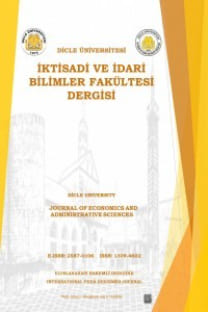GAP BÖLGESİNDE KENTLEŞMEDEN DOĞAN SORUNLAR VE ÇÖZÜM ÖNERİLERİ
GAP Türkiye’nin en önemli bölgesel kalkınma projelerinden birisidir. GAP çok amaçlı, çok sektörlü, çalışmaları bölgenin hem kırsal hem de kentsel alanıyla ilgili çok kapsamlı, entegre bir kalkınma projesidir. GAP uygulamalarıyla birlikte bölgede hem kent sayısında hem de kentli nüfus oranında önemli artış olmuştur. GAP Bölgesi 1980’li yıllardan itibaren hızlı kentleşme sürecine girmiştir. Bölgenin hızlı kentleşme süreci diğer bölgelerimize göre daha hızlı, ani ve aşırı şekilde olmuştur. 1980 genel nüfus sayımında bölgede nüfusu 100.000’ni geçen ilçe sayısı 6 iken, 2010 ADNKS (Adrese Dayalı Nüfus Kayıt Sistemi) sonuçlarına göre nüfusu 100.000’ni geçen ilçe (merkez ilçeler dahil) sayısı 20 olmuştur. 1980 genel nüfus sayımı sonuçlarına göre 1.600.000 olan kentli nüfus 2010 ADNKS sonuçlarına göre 4.900.000’ni geçerek 5.000.000’na yaklaşmıştır. 1980-2010 tarihleri arasında yani son 30 yılda GAP Bölgesinde kentli nüfus 3 kattan fazla artış göstermiştir. Kentlerdeki ani ve aşırı nüfus artışı konut yetersizliği, gecekondu, imarlı arsa, altyapı eksikliği ve çevre sorunları gibi birçok kentsel sorunlara yol açmaktadır. Bölgenin büyük kentlerinde özellikle Diyarbakır, Gaziantep ve Şanlıurfa’da 1. Sınıf tarımsal araziler konut ve sanayi yerleşimi için imara açılarak önemli çevre sorunlarına yol açmaktadır. Eğer bölgede kentsel sorunlarla ilgili şimdiden ciddi önlemler alınmazsa yakın gelecekte başta büyük kentler olmak üzere bölge kentleri içinden çıkılamaz sorunlarla karşı karşıya kalacaktır. İşte bu çalışmanın amacı GAP Bölgesinde oluşan kentleşme sorunlarına dikkat çekmek ve bu konudaki çözüm önerilerini sunmaktır. Çalışmanın hacmi göz önünde bulundurularak, çalışma GAP Bölgesinde kentleşme sorunları ve çözüm önerileri konusu ile sınırlandırılmıştır. Çalışmada son veriler (2010) kullanılarak yapılan yeni bir çalışma ile kentleşme konusundaki bilgilerin yenilenmesine ve konudaki çalışmalara az da olsa bir katkının sağlanmasına çalışılmıştır
Anahtar Kelimeler:
GAP (Güneydoğu Anadolu Projesi), kentleşme, konut, gecekondu, arsa, altyapı, çevre sorunlar
PROBLEMS ARISING FROM URBANIZATION IN THE GAP REGION AND THE SOLUTIONS OF THESE PROBLEMS
GAP is one of the most important regional development projects of Turkey. GAP is an integrated project, which is a multi-purpose, multi-sectoral and whose implementations are related to both rural and urban regions. Thanks to the implementations of GAP, there has been a considerable increase both in the number of cities and the rate of urban population in the region. The GAP region entered a process of rapid urbanization in the 1980s. The process of rapid urbanization in the GAP region seems to have been faster, more sudden and extreme than other regions. While the number of the districts in the region whose population exceeds 100.000 was 6 in the 1980 census, according to the results of 2010 ABPRS (Address Based Population Registration System) this number (including the central districts) was 20. The urban population, which was 1.600.000 in the general population census of 1980, came up to 5.000.000 exceeding 4.900.000 according to the results ABPRS. Between 1980 and 2010, the last 30 years, the urban population increased more than 3 times in the GAP Region. Sudden and excessive population growth in urban areas causes urban problems such as lack of housing, slums, building land, lack of infrastructure and environmental problems. In the big cities of the region, especially in Diyarbakir, Gaziantep and Şanlıurfa, 1st Class of agricultural land is allowed to be used for the placement of residency and industry and this leads to important environmental problems. If serious measures are not taken in advance on urban issues, the cities of the region, especially the major cities, will be faced with intractable problems in the near future. This study aims to draw attention to the problems of urbanization of the GAP Region and to provide solutions to this issue. Considering the volume of the study, the study is limited to the GAP Region, urbanization problems and solutions. In this study by using a recent study with latest data (2010) it is aimed to provide a contribution to the renewal of the urbanization data and to the other studies about this issue
Keywords:
GAP (Southeastern Anatolia Project), urbanization, housing, slums, land, infrastructure, environmental issues,
- ISSN: 1309-4602
- Yayın Aralığı: Yılda 2 Sayı
- Başlangıç: 2011
- Yayıncı: Dicle Üniversitesi
